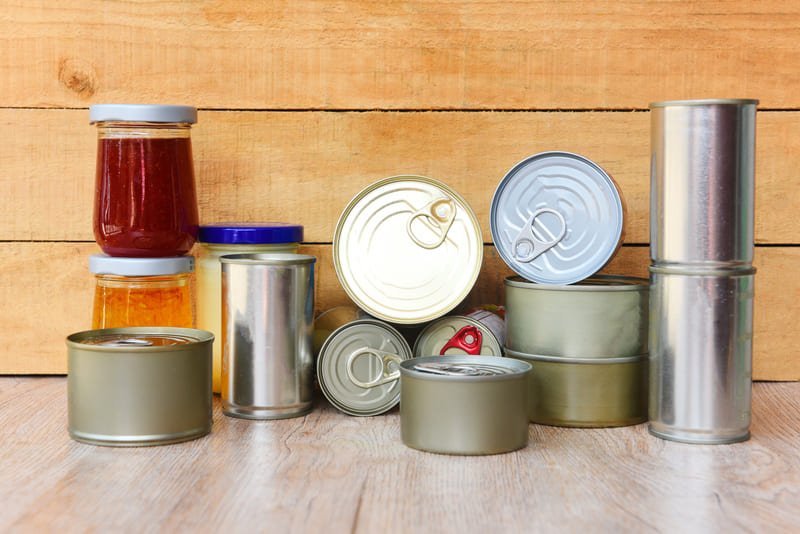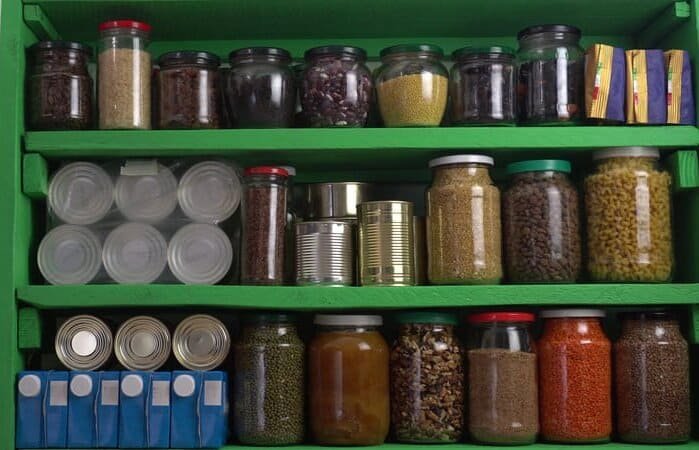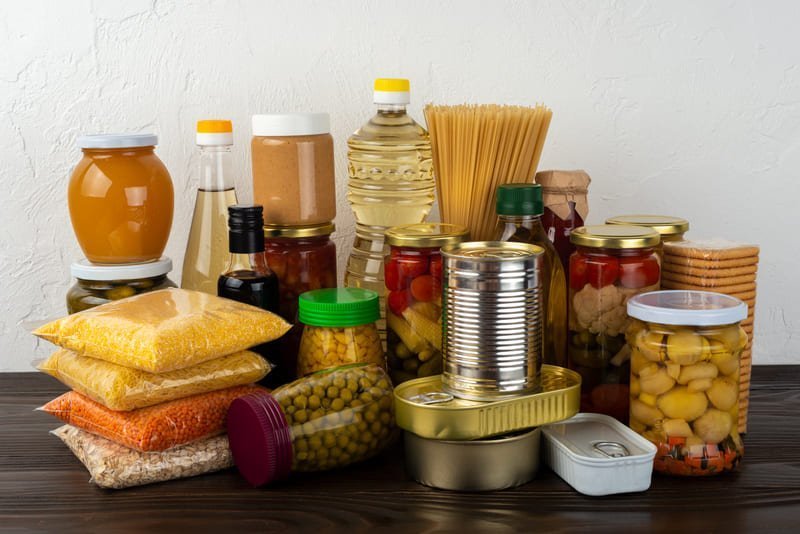Are you looking for a way to make homemade pemmican? Look no further! In this guide, I will provide you with an easy recipe to create traditional pemmican right in your own kitchen. Pemmican is a nutrient-packed, non-perishable food that has been used by Native peoples and fur traders for centuries. It is the perfect survival food, lasting for months or even years without refrigeration.
To make pemmican, you will need a few simple ingredients: lean meat (such as deer, beef, caribou, or moose), dried fruit, and rendered fat. The meat and fruit should be dried and ground into a powder consistency. The rendered fat, also known as tallow, should be heated until liquid and mixed with the dried meat and fruit. Additional ingredients like unsalted nuts or honey can be included for added flavor.
Key Takeaways:
- Traditional pemmican is a nutritious, non-perishable food.
- Pemmican has been used by Native peoples and fur traders for centuries.
- Ingredients for pemmican include lean meat, dried fruit, and rendered fat.
- The meat and fruit should be ground into a powder consistency.
- Mix the rendered fat with the dried meat and fruit, along with any additional ingredients.
What is Pemmican?
Pemmican, a traditional food originating from Native peoples and widely adopted by fur traders in North America, is a highly nutritious and long-lasting survival food. It is a dried mixture of meat, berries, and rendered fat, also known as tallow.
Pemmican was the preferred food for Native American scouts who required a portable, high-energy source of sustenance during their travels. The combination of dried meat, berries, and tallow provided vital nutrients and sustained them for extended periods of time.
The survival food pemmican, with its unique blend of dried meat, berries, and tallow, served as an invaluable resource for Native peoples and fur traders alike, due to its long shelf life and high nutritional value.
Originating from the resourcefulness and ingenuity of Native peoples, pemmican became widely popular among fur traders who recognized its benefits during long expeditions and harsh winters. Its ability to be stored without refrigeration, lasting for months and even years, made it a practical choice for survival in challenging environments.
Pemmican is a testament to the resourcefulness and knowledge of Native peoples and the adaptability of fur traders. Its enduring popularity as a survival food showcases its effectiveness in providing sustenance, energy, and vital nutrients when other food sources are scarce.
The Benefits of Pemmican
Pemmican offers numerous benefits as a survival food:
- High Nutritional Value: Packed with essential proteins, vitamins, and minerals, pemmican provides a well-rounded source of nourishment.
- Long Shelf Life: Due to its dehydration and preservation process, pemmican can be stored without refrigeration for months or even years.
- Portability: Compact and lightweight, pemmican is easy to carry, making it suitable for outdoor adventures, expeditions, and survival situations.
- Energy Boost: The combination of dried meat and tallow supplies a concentrated source of energy, ideal for sustained physical exertion.
- Taste and Versatility: Pemmican can be enjoyed as is or used as an ingredient in various recipes, adding flavor and nutritional value to meals.
Pemmican: A Cultural Legacy
Pemmican not only serves as a practical survival food but also holds deep cultural significance. It represents the heritage and traditions of Indigenous peoples, reflecting their resourcefulness, connection to nature, and respect for sustainable food practices.
Today, pemmican continues to be celebrated as a traditional food and an enduring symbol of resilience and adaptability. By preserving the knowledge and techniques behind pemmican production, we honor the contributions and cultural legacy of Native peoples and fur traders.
Next, we delve into the essential ingredients and step-by-step preparation of pemmican in Section 3.
Pemmican Ingredients and Preparation Steps
 Creating pemmican requires a careful selection of ingredients and a step-by-step preparation process. In this section, I will guide you through the essential pemmican ingredients and the necessary steps to prepare this traditional food.
Creating pemmican requires a careful selection of ingredients and a step-by-step preparation process. In this section, I will guide you through the essential pemmican ingredients and the necessary steps to prepare this traditional food.
Ingredients:
To make pemmican, you will need the following ingredients:
- Lean meat (such as deer, beef, caribou, or moose)
- Dried fruit
- Rendered fat (also known as tallow)
It is important to use lean meat to ensure the removal of excess fat, which can lead to spoilage. The dried fruit will add a pleasant sweetness to balance the flavors, and rendered fat will provide the necessary moisture and preservation.
Preparation Steps:
Now let’s dive into the step-by-step process of preparing pemmican:
- Dry and grind the lean meat into a powder consistency. This can be achieved by dehydrating the meat and then using a food processor or mortar and pestle to grind it.
- Grind the dried fruit, leaving some lumps for texture. You can use a blender or food processor for this step.
- Heat the rendered fat until it becomes liquid.
- Mix the dried meat and fruit with the melted fat in a bowl. You can also add additional ingredients like unsalted nuts or honey at this stage for added flavor and nutrition.
- Ensure that all the ingredients are thoroughly combined.
- Allow the mixture to cool.
- Store the pemmican in a cool, dry place to maintain its freshness and shelf life.
By following these simple steps, you can create your own homemade pemmican, packed with lean meat, dried fruit, and rendered fat. The combination of these ingredients ensures a nutritious and long-lasting survival food.
Tips for Making Good Pemmican
 When it comes to making pemmican, there are a few essential tips that can help ensure a successful and delicious outcome. Follow these guidelines to create the perfect batch of pemmican:
When it comes to making pemmican, there are a few essential tips that can help ensure a successful and delicious outcome. Follow these guidelines to create the perfect batch of pemmican:
1. Acquire High-Quality Suet
Start by talking to your local butcher and acquiring suet, which is the rendered fat used in pemmican. Opt for suet that is fresh and of high quality to ensure the best flavor and texture in your final product.
2. Properly Render the Fat
Rendering the fat is a crucial step in the pemmican-making process. Take care to melt the suet without burning or smoking it. This will help preserve the flavor and prevent any unwanted bitterness or smokiness in your pemmican.
3. Consider Climate and Seasonality
The amount of fat used in pemmican can vary depending on the climate and time of year. In warmer temperatures, less fat may be needed to prevent the pemmican from becoming too greasy or soft. Experiment with different ratios to find the perfect balance for the specific conditions you are preparing pemmican in.
4. Label and Experiment
When trying out different pemmican recipes, it’s essential to label each batch with the ingredients and ratios used. This will help you track your experiments and identify the recipes that yield the best results. Feel free to get creative and experiment with different flavors and additions that suit your taste preferences.
Remember, the key to making good pemmican lies in properly rendering the fat and ensuring that the meat and fruit used are thoroughly dried, not cooked or partially dry. By following these tips, you’ll be well on your way to creating flavorful and long-lasting pemmican.
Next, we’ll conclude our guide to making pemmican with a summary of the key takeaways and the importance of this traditional recipe for a nutrient-packed survival food.
Conclusion
Making pemmican at home using a traditional recipe is an excellent way to create a nutrient-packed, non-perishable survival food. By following the steps outlined in this guide and using the proper ingredients and preparation techniques, you can enjoy the benefits of pemmican.
Whether you are exploring the wilderness or looking for a convenient and long-lasting food option, pemmican is a versatile and nutritious choice. With its combination of dried meat, berries, and rendered fat, it provides a balanced blend of protein, carbohydrates, and essential nutrients.
Experiment with different flavors by adding unsalted nuts or honey to your pemmican. The possibilities are endless, and you can tailor the recipe to suit your taste preferences. The best part is that pemmican can be stored for long periods without refrigeration, making it an ideal survival food.
In conclusion, making pemmican using a traditional recipe allows you to prepare a nutrient-packed, shelf-stable food source that can sustain you during wilderness adventures or emergency situations. So why not give it a try and experience the rich heritage and practicality of this time-tested food?
FAQ
What is pemmican?
Pemmican is a traditional food that originated from Native peoples and was adopted by fur traders in North America. It is a dried mixture of meat, berries, and rendered fat.
What are the ingredients required for making pemmican?
The traditional pemmican recipe typically includes lean meat (such as deer, beef, caribou, or moose), dried fruit, and rendered fat (also known as tallow).
How do I prepare pemmican?
To prepare pemmican, you need to dry and ground the meat and fruit into a powder consistency. Then, the rendered fat should be heated until liquid and mixed with the dried meat and fruit, along with any additional ingredients. The mixture should be cooled and stored in a cool, dry place.
Where can I get the rendered fat for pemmican?
It is recommended to talk to your local butcher to acquire suet, which is the rendered fat needed for pemmican.
How should I render the fat for pemmican?
The suet should be melted without burning or smoking it. The amount of fat used can vary depending on the climate and time of year, with less fat needed in warmer temperatures.
How long can pemmican last without refrigeration?
Properly made pemmican can last for months or even years without refrigeration, making it a valuable survival food.
Can I experiment with different pemmican recipes?
Yes, it is recommended to label your pemmican if you try different recipes and to experiment with your own recipes to find the perfect flavour.












